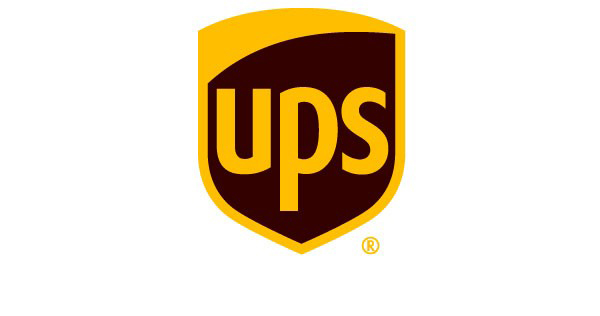You just never know what will turn up.
UPS to Test New Hydraulic Hybrid Technology
 UPS has been testing and deploying different types of automotive technology for decades looking for ways to enhance the environmental performance of our fleet. That continues today with our fleet of over 1,300 alternative fuel vehicles including hydrogen, hybrid electric, propane, compressed natural gas and liquefied natural gas vehicles. UPS is now adding a new kind of technology to that list -hydraulic hybrid technology. UPS to test the World’s First Full Hydraulic Hybrid Urban Delivery Vehicles
UPS has been testing and deploying different types of automotive technology for decades looking for ways to enhance the environmental performance of our fleet. That continues today with our fleet of over 1,300 alternative fuel vehicles including hydrogen, hybrid electric, propane, compressed natural gas and liquefied natural gas vehicles. UPS is now adding a new kind of technology to that list -hydraulic hybrid technology. UPS to test the World’s First Full Hydraulic Hybrid Urban Delivery Vehicles
The U.S. Environmental Protection Agency (EPA), UPS, Eaton, International Truck and Engine, and the U.S. Army are testing the world's first full hydraulic hybrid urban delivery vehicle.
Hydraulic hybrid technology, which promises significant emissions reduction and fuel economy, will become the power source for two vehicles that look like traditional brown UPS delivery trucks. The nature of our business, which requires vehicles to make frequent stops-and-starts, makes UPS an ideal partner to test this new automotive technology since the act of applying the vehicle’s brakes increases the hydraulic pressure, or energy needed, to propel the vehicle without utilizing the diesel engine.
UPS first learned of this opportunity in 2003 when the company was working with the EPA and DaimlerChrysler to build and test hydrogen fuel cell vehicles.
How Hybrid Hydraulic Technology Works
Hybrid hydraulic technology includes two power sources that propel the vehicle - a small fuel-efficient diesel combustion engine and hydraulic components. Hydraulic hybrid technology replaces a conventional drive train with a hydraulic one, which eliminates the need for a mechanical transmission and driveline.

Fuel Economy & Emissions Reduction
The features of this vehicle combine to make a highly cost-effective hybrid with the following benefits:
 UPS has been testing and deploying different types of automotive technology for decades looking for ways to enhance the environmental performance of our fleet. That continues today with our fleet of over 1,300 alternative fuel vehicles including hydrogen, hybrid electric, propane, compressed natural gas and liquefied natural gas vehicles. UPS is now adding a new kind of technology to that list -hydraulic hybrid technology. UPS to test the World’s First Full Hydraulic Hybrid Urban Delivery Vehicles
UPS has been testing and deploying different types of automotive technology for decades looking for ways to enhance the environmental performance of our fleet. That continues today with our fleet of over 1,300 alternative fuel vehicles including hydrogen, hybrid electric, propane, compressed natural gas and liquefied natural gas vehicles. UPS is now adding a new kind of technology to that list -hydraulic hybrid technology. UPS to test the World’s First Full Hydraulic Hybrid Urban Delivery Vehicles The U.S. Environmental Protection Agency (EPA), UPS, Eaton, International Truck and Engine, and the U.S. Army are testing the world's first full hydraulic hybrid urban delivery vehicle.
Hydraulic hybrid technology, which promises significant emissions reduction and fuel economy, will become the power source for two vehicles that look like traditional brown UPS delivery trucks. The nature of our business, which requires vehicles to make frequent stops-and-starts, makes UPS an ideal partner to test this new automotive technology since the act of applying the vehicle’s brakes increases the hydraulic pressure, or energy needed, to propel the vehicle without utilizing the diesel engine.
UPS first learned of this opportunity in 2003 when the company was working with the EPA and DaimlerChrysler to build and test hydrogen fuel cell vehicles.
How Hybrid Hydraulic Technology Works
Hybrid hydraulic technology includes two power sources that propel the vehicle - a small fuel-efficient diesel combustion engine and hydraulic components. Hydraulic hybrid technology replaces a conventional drive train with a hydraulic one, which eliminates the need for a mechanical transmission and driveline.

Fuel Economy & Emissions Reduction
The features of this vehicle combine to make a highly cost-effective hybrid with the following benefits:
- 60-70 percent improvement in fuel economy in laboratory tests
- 40 percent reduction in CO2 emissions
- Running the engine at the optimum efficiency point as much as possible
- Regenerative braking, which captures and stores a large portion of the energy normally wasted in vehicle braking. The stored energy is used to help propel the vehicle during the next vehicle acceleration—reducing fuel consumption and enabling the vehicle to operate more efficiently.
- These vehicles can store the energy from the hydraulic power, even after the vehicle is turned off. This storage may allow the vehicle to start with this energy, instead of relying on the engine to propel the vehicle.





Comment